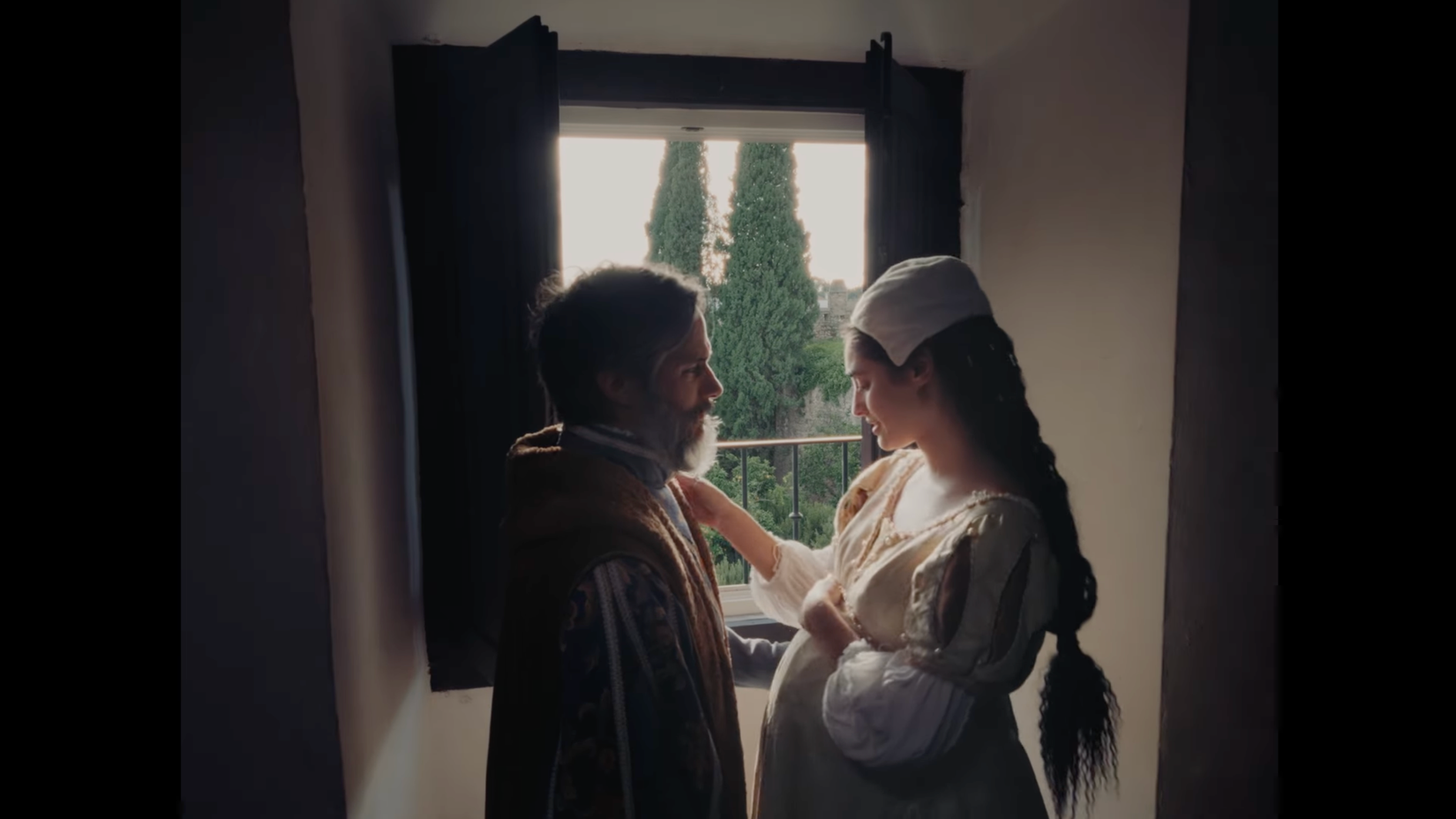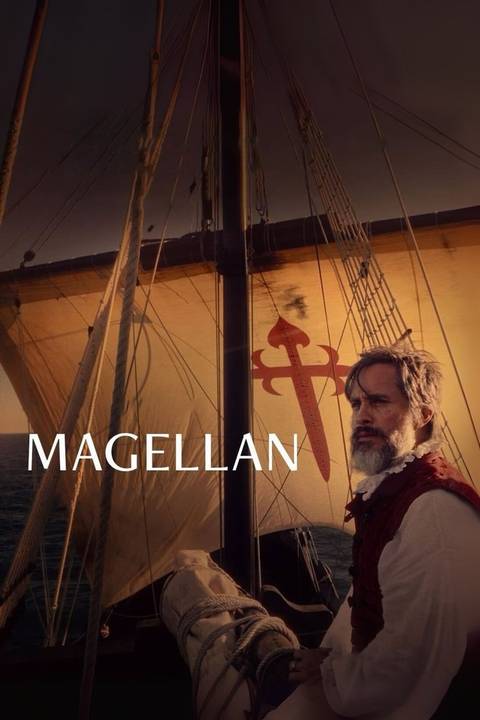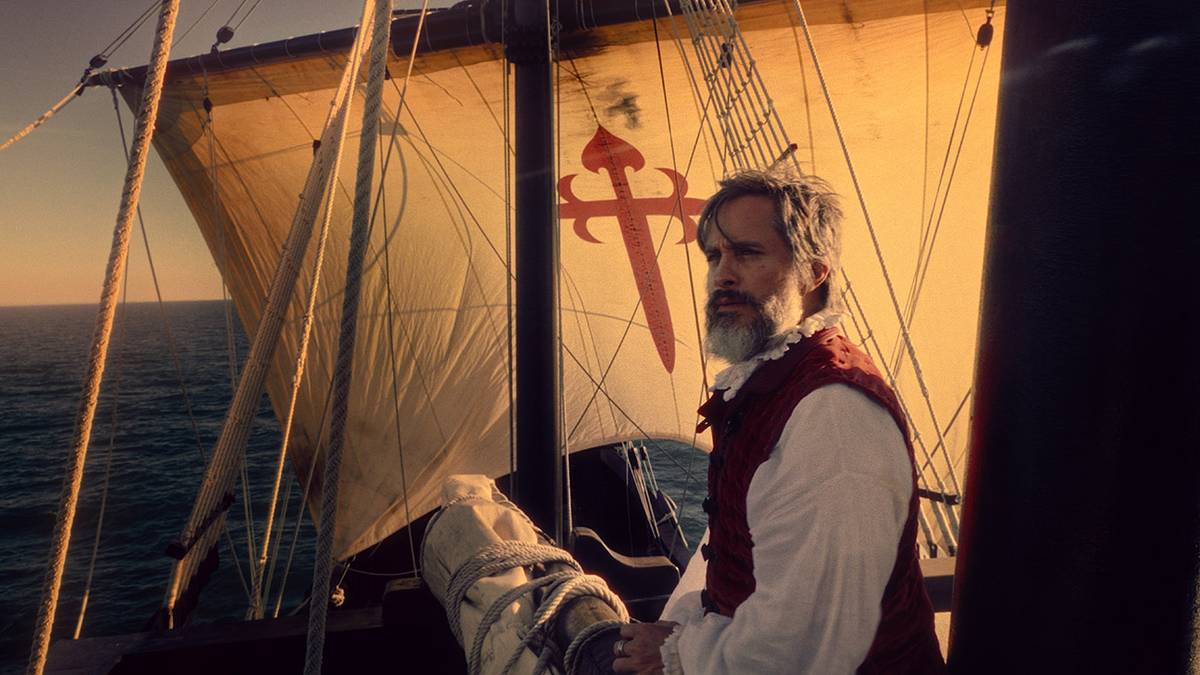



The mythology of Ferdinand Magellan (Gael García Bernal) has reached such an entrenchment in the West that the name is synonymous, globally, with exploration. Yet for director Lav Diaz, and for many raised in the Philippines and in the Global South more generally, Magellan’s history is marred with the bloody stains of colonialism. In MagellanDiaz counters the notion of the titular hero as a Great Man with a different mythology: the legend of Lapulapu, the chieftain of Mactan Island, who repelled the Portuguese explorer and his Spanish forces to their deaths.
Lapulapu’s fabled heroics are the stuff of legend in the Philippines, where his likeness has been reproduced in paintings, films, and in a 66-foot-tall monument in Cibu. Yet Diaz paints the figure as a mythological trick, an imaginary piece of bait that Rajah Humabon (Ronnie Lazaro), a chief on Mactan Island, drew up in order to lure the bombastic Magellan to battle.
For Diaz, the choice is borne out of a doubt of Lapulapu’s real-life existence, as he mentioned in a post-screening Q&A at AFI Fest, but for the film itself, the creation creates something new. An implicit argument that stories of Western hegemony can be beaten back by other stories, stories of resistance, stories of courage. And that the Achilles’ heel of a colonial conqueror may be its hubris.
Magellan Is Diaz’s Most Subversive Work Yet
Clocking in at 160 minutes, Magellan is one of Slow Cinema pioneer Lav Diaz’s shortest films. That length provides the perhaps erroneous notion that the film is one of his more accessible. Yet the film, shot on a Panasonic J7 camera with a square 4:3 aspect ratio, frequently feels like a museum installation in its preference for image over plot. The camera and its framing provide Magellan with a persistently ethereal glow, both of cinema’s origins as a continuation of the still image and of a more modern ilk. Shot by frequent Albert Serra collaborator Artur Tort, each frame is painstakingly composed. Like the Dutch landscape paintings of the time, each frame bursts with an extraordinary level of detail.
The compounded effect of this choice provides Diaz a secondary weapon in his anti-colonialist scourge: the immutability of nature. Like the experimental filmmaker James Benning, Diaz’s frames are fixed on a tripod like a casual observer, watching as worlds are created, destroyed, and rebuilt. Taking place primarily between 1511, when Magellan conquered the Spanish city of Malacca, and his beheading in 1521 at the hands of Humabon, Magellan documents the anti-hero’s bloody, cold path, which is often forged through a stubborn unwillingness to adhere to the ecological rules that govern everyone else.
Yet, his depiction of Lapulapu as imaginary included, Diaz is mostly unconcerned with the facts of history as much as its enduring place in his people’s collective consciousness. The crew has taken great care to portray period-accurate clothing, props, and settings (with the ship Victoria fully re-constructed), but dead bodies and battles dot many a frame without much explanation or exposition. There is a frankness on display which posits that stories are told in broad strokes: look at this man, look at the blood-soaked earth he left behind.
Despite that trail of blood, Magellan is an exceptionally beautiful film to look at, with Tort’s cinematography telling as much of the story of this unromantic romantic hero as Diaz’s script. Magellan is framed as a power-hungry, petulant child whose ambition is matched only by his ability to easily shed whatever personal values he may hold, particularly as a so-called Christian. In one particularly stunning image, Magellan is framed staring at a massive castle on a beach, which cleanly tells the story of both a small man and his oversized desires. Diaz’s criticism for the indigenous is also evident through framing in a startling final image of the tribe dancing with severed heads around a glowing fire.
Diaz, too, takes time to humanize Magellan, mostly through his love of Beatriz (Ângela Ramos), whose presence in the film is mostly portrayed through a series of glowing, softly filtered apparition-like hallucinations. Far from his home and from the woman he loves, Magellan dreams of her giving birth, of the death of their child, and of her own death, too, all in delicately imbricated images.
Diaz’s previous work is both longer, cheaper and mostly in black and white. Magellan is still long, but by comparison, a breeze; it is also clearly expensive and centers a massive global star in what is essentially a biopic. But Diaz’s work is subversive by design, a bait-and-switch as a matter of course. The few historical facts that Diaz includes, like dates and locations, are mere footnotes to a larger discourse of the enduring legacy of colonialism’s inherent emptiness.
Perhaps the clearest indicator of the filmmaker’s intentions is in the character of Magellan’s Cebuano slave, whom he names Enrique (Amado Arjay Babon), the purchasing of whom starts the film and the petrified eyes of whom it ends. Enrique’s bloodied hands are so because political violence is a requirement for his freedom, a somber reality and reminder from Diaz for our polarized present. Some things are inescapable.
Magellan screened at the 2025 AFI Fest.

- Release Date
- September 10, 2025
- Runtime
- 165 minutes
- Director
- Lav Diaz
- Writers
- Lav Diaz
- Producers
- Joaquim Sapinho, Montse Triola, Albert Serra, Bianca Balbuena, Paul Soriano, Bradley Liew, Marta Alves, Lav Diaz, Viktor Mara
-

Gael García Bernal
Ferdinand Magellan
-

Source link

اترك تعليقاً